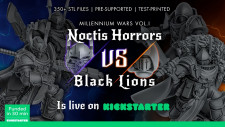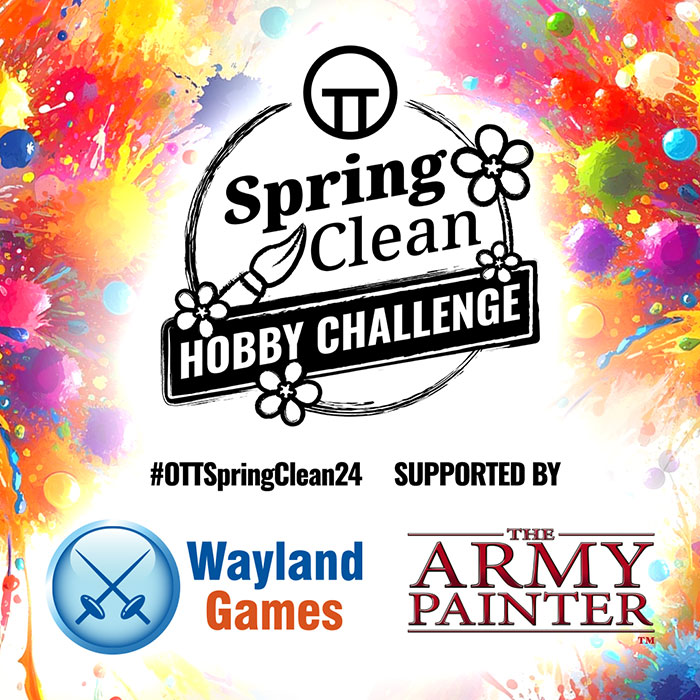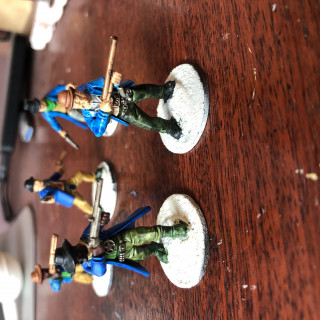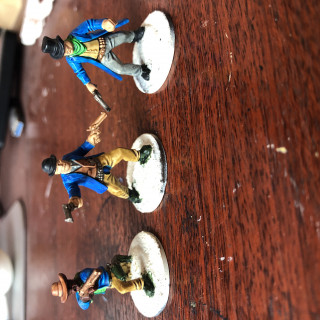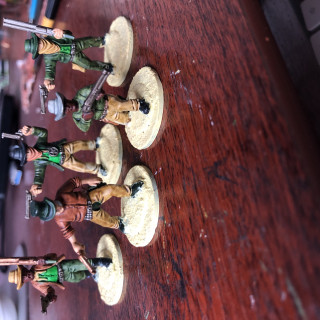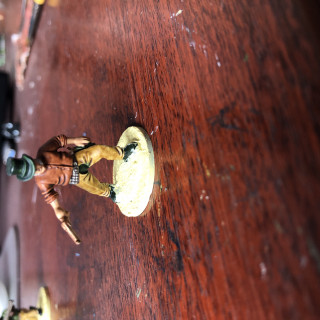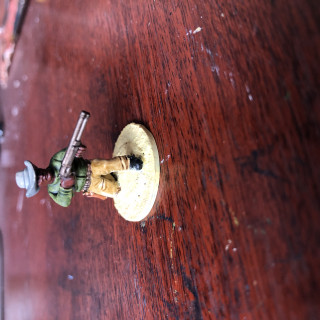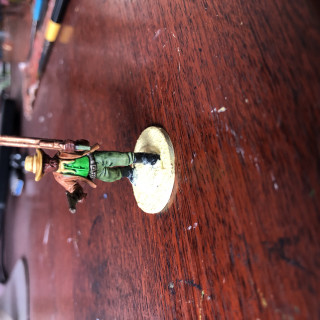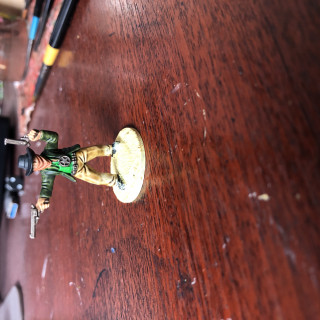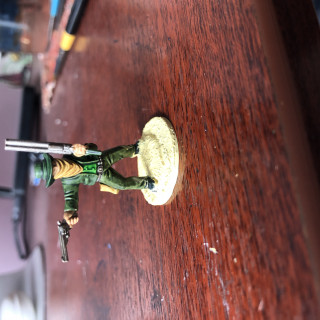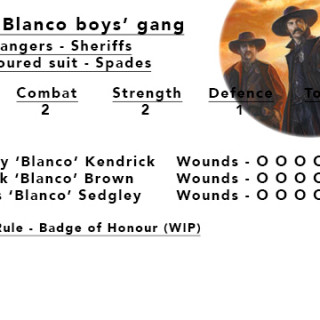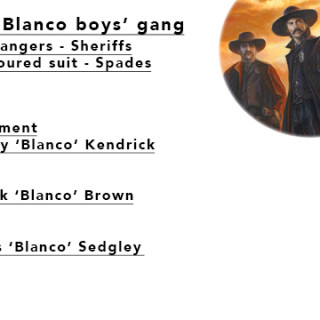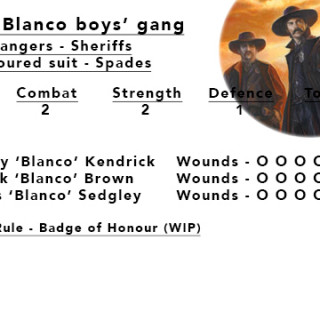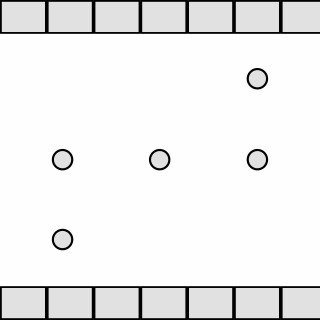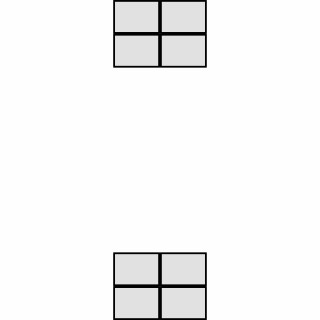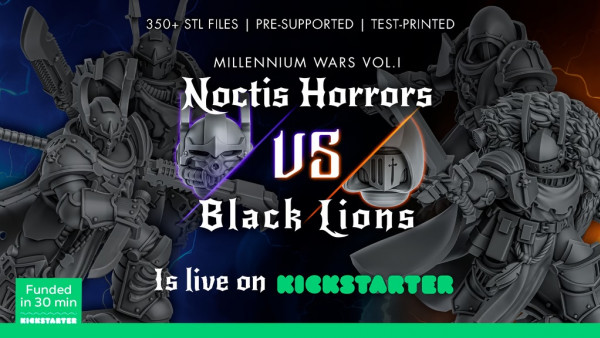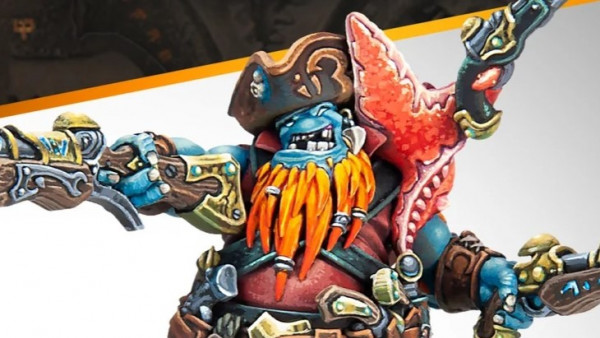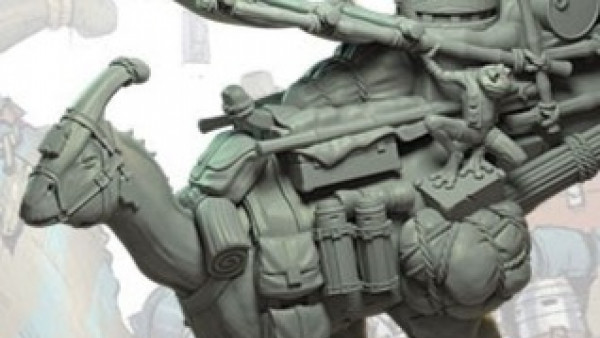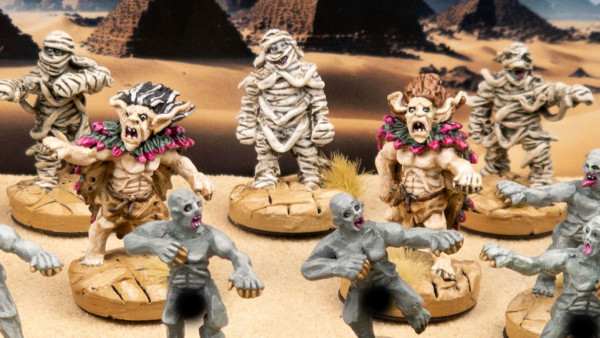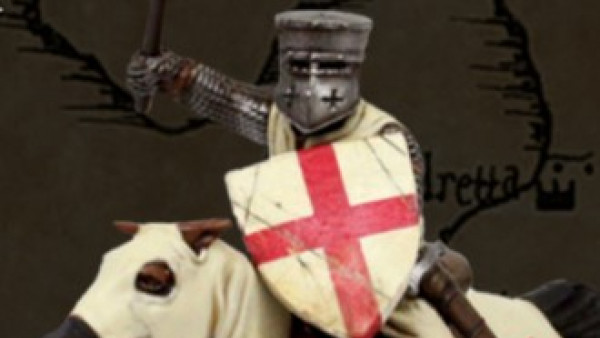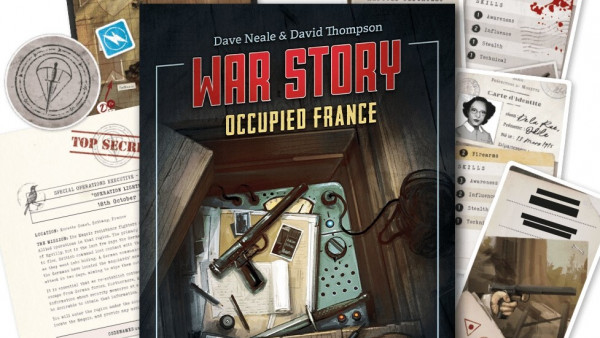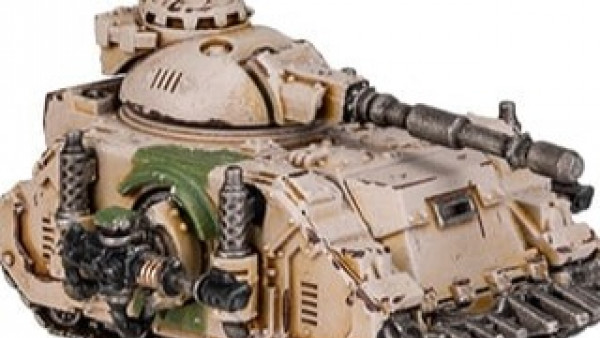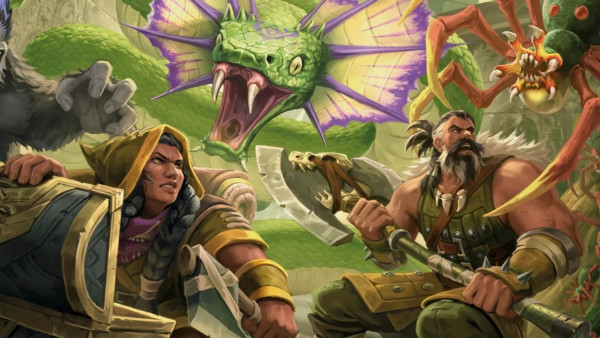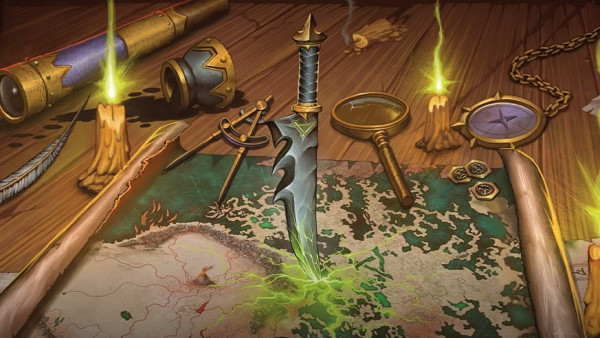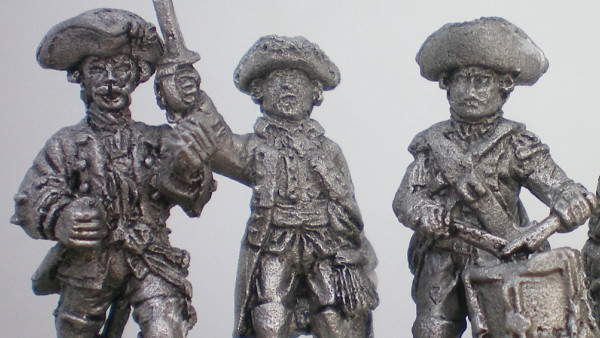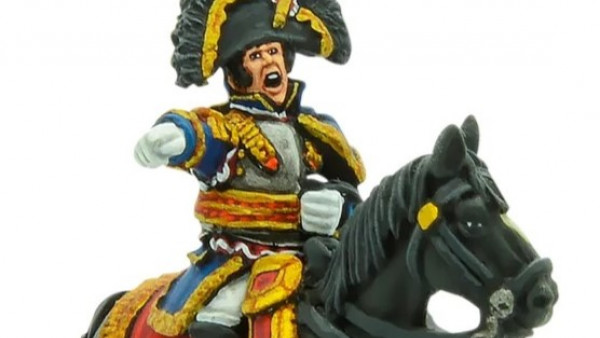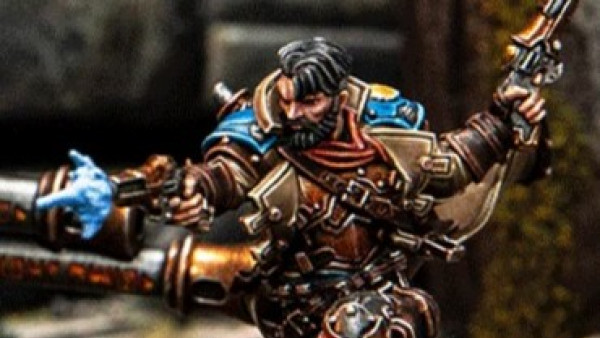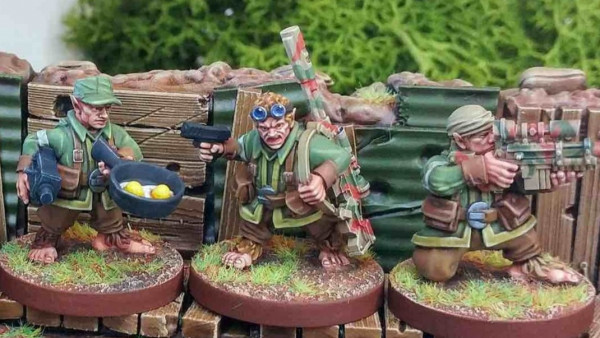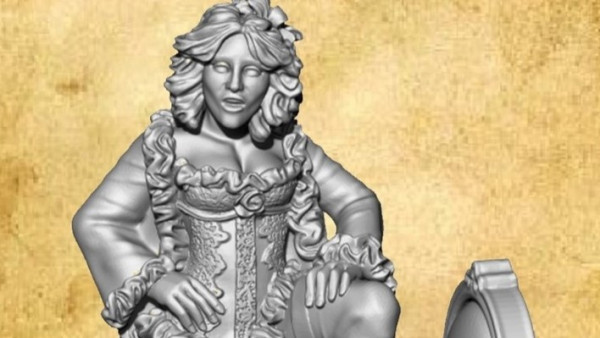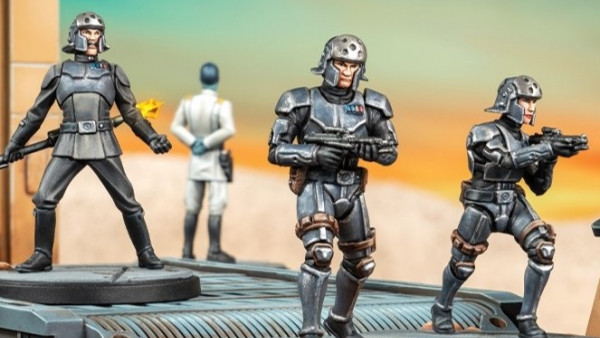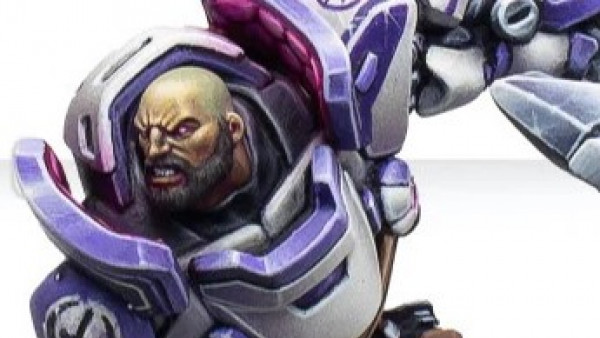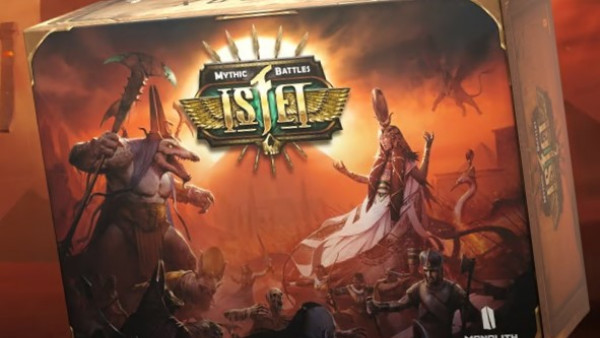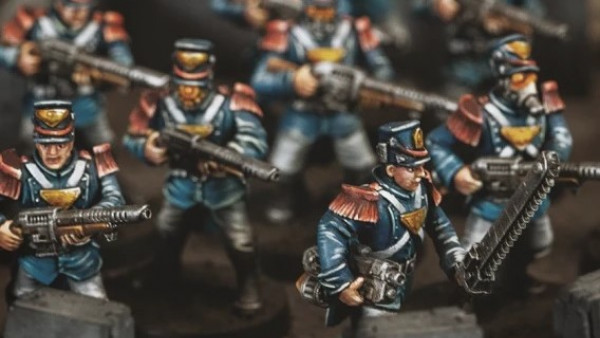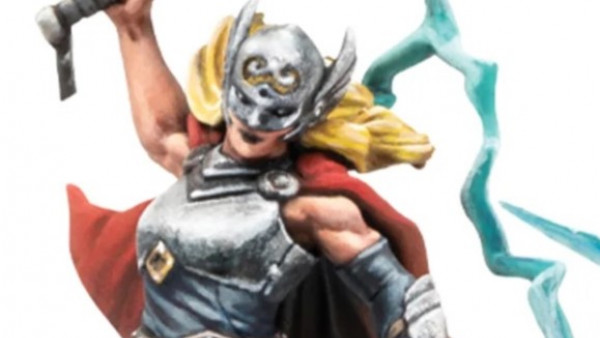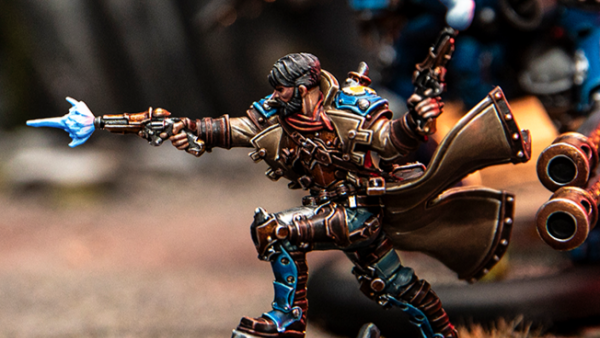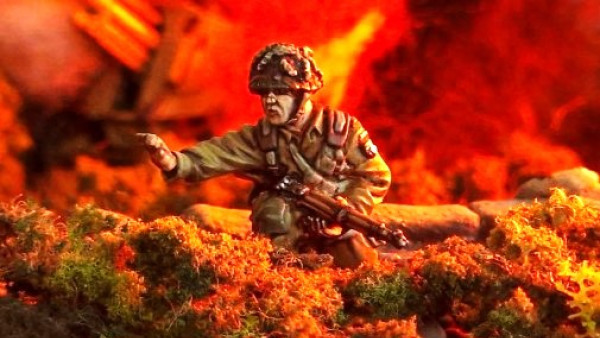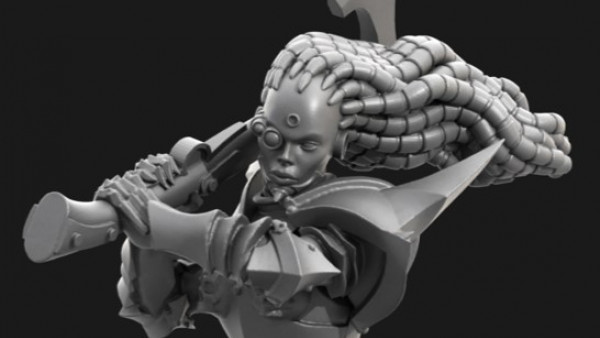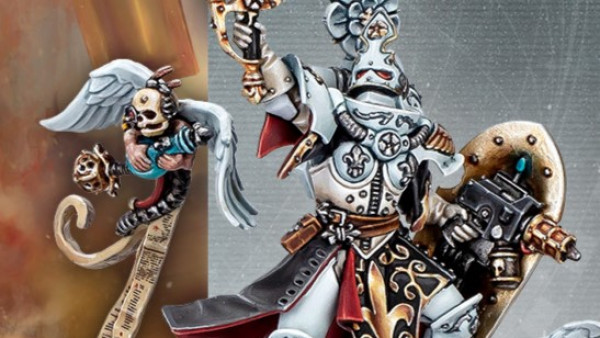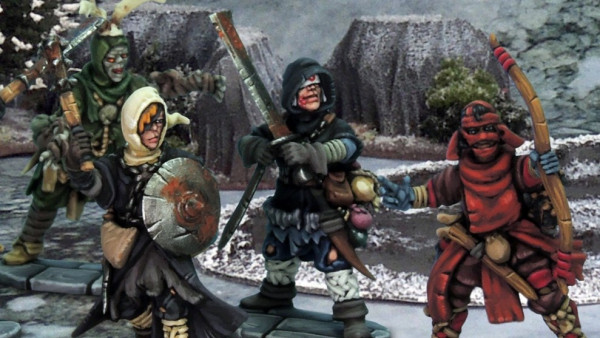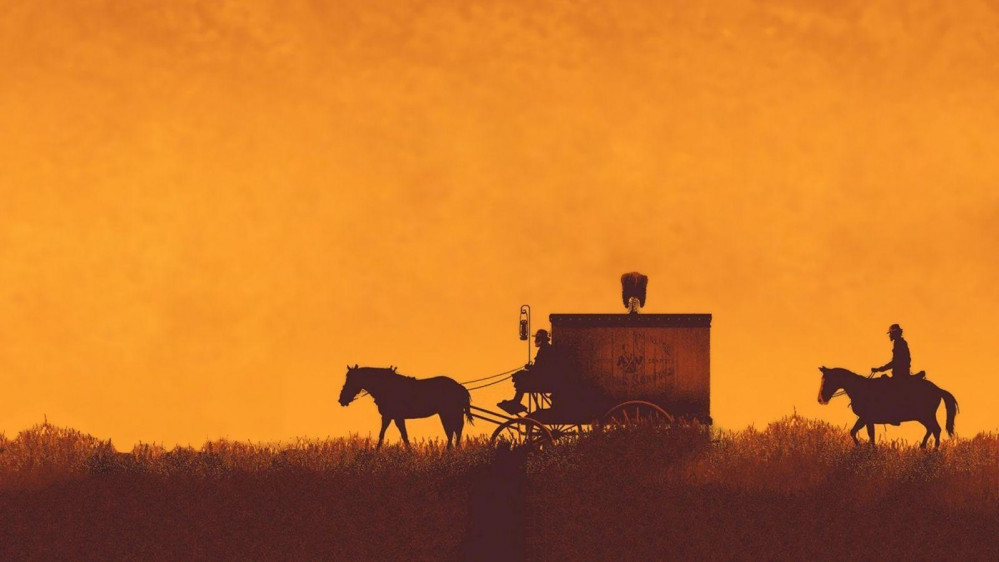
Last Hope Frontier
Recommendations: 229
About the Project
'Last Hope Frontier' (Working Title) is a small scale skirmish cowboy posse game in creation by Thomas Jack Brown. Set in the town of Last Hope, factions of the town's residents and outlying outlaws vie for control of the town. The game uses a standard size deck of 54 playing cards as its mechanic for measuring distances and conducting shooting and combat.
Related Genre: Western
This Project is Active
First games test this weekend!
I am testing Last Hope Frontier for the first time on the tabletop at the weekend!
Attempting to distil my ramblings and notes down into a flow-chart, easy accessible and readable format for my two friends to test the game has been an interesting feat.
I find the language of gaming interesting.
Words for the purpose of fiction are created (40K player of Necron here – some of the names of characters look like a scrabble board has been dropped on the floor!)
Words are used to inform or describe actions that are able to be taken by players, with words that might not be the original usage/meaning of that word.
Words from other related industries are ported across as an easy fit to describe a situation/action.
And in all my time playing, for the purpose of entertainment and enjoyment, there’s an implicit expression from the written rules to the players reading it and an acceptance of ‘okay, this means that’. Its the same with symbology and colours as well.
I hope that my ordered ramblings will be able to be understood, as that is the first goal I have of the weekend testing – will the players gain an understanding of what my intentions are?
Variable game length idea
Game scenarios to last five turns, however, a variable game length using the flip of a card could be utilised.
At the end of turn five, one player flips a card off the top of the deck, if it shows between 2 – 5, the game is over, otherwise, go into a sixth turn.
At the end of turn six, the other player who didn’t flip a card off the top of the deck for game end flips a card off the top of their deck. If the card is between a 2 – 10, the game is over, otherwise go to a seventh turn.
The game will end after seven turns.
Scenario - Bounty Hunt - Dead not alive! (initial thoughts)
For this scenario IGNORE the normal routing rule (either leader and deputy taken out of action OR three out of five models taken out of action).
Each player names another model in their opponents gang. That chosen model is the bounty prize for their own gang.
Each player is within their right to take other models in the gang out of action to make the act of taking the bounty-chosen model easier, but the moment the bounty model of either side is taken out of action, the game is over and the victorious player is declared. There is also a pushing-your-luck element to this – do you as a player risk your own gang members being taken out of action in the whirling combat/shoot out, or do you go direct and focus on getting the bounty?
In addition, the more senior the chosen opponents model, the larger the post-game reward. If a player names a crew-member model, minimal reward, deputy is mid-level reward, leader is is high-level reward.
Overarching story gist
The setting for the game would be the town of Last Hope in 1857, a town that was built at the end of the Californian Gold Rush (1853) near the Californian/Nevadan border, near the flow of the North Fork of the American River.
The town was established as a place for a wave of settlers and miners to stake their claim on a seam of gold and make a life for themselves, but bust soon followed boom, and in only a few years, the gold seam had run dry.
Now, in 1857, in a cloud of ruin and uncertainty, the town of Last Hope looks to the future and its citizens and those with more nefarious intent, can look to steer the fate of the town.
Folks can still stake claim on the river bank and find gold through panning, but with the gold all but dug up, time spent doing so and the potential profits are disproportionate. The real money is to be made in honourable commerce, bootlegging, bounty hunting or as a gun for hire.
Townsfolk (nearly) completed!
I have (nearly) completed the townsfolk band from the Gunslingers box set, just need to do the sand basing, but wanted to get the photos up.
I wanted to keep these guys with some uniformity, in the same way that a sheriff’s band may have uniformity, as I imagine the townsfolk gang would be some kind of informal citizens militia, made up of the more able men of the town of Last Hope, so its why they’ve all got the blue jackets.
I wasn’t expecting talassar blue contrast to come out so vivid, but them’s the breaks, and that’s fine. I had a lot of fun painting with overwhelmingly contrast paints again, so much so that a 40K project I want to do is pushing me towards all contrast.
Painted models at last!
I have been super busy in the regular job of late so I haven’t had much time to develop rules further, but for the sake of play testing the games rules and mechanics, I purchased a box of Great Escape Games cowboys.
I have to say, they’re a really fun kit to put together and really well priced for what they are and the amount in the box.
A friend has built some and painted his up as Outlawmen and Sheriffs, so I have painted the first set of bootleggers. I have completed the leader of the Townsfolk clan, but will post them up once completed.
Mock ups for gang cards
Tracking your posse members would be done using 2.5” x 3.5” double sided cards, same size as the playing cards used for movement, as the idea would be that you could purchase a themed deck of cards that could come with the ganger cards in the box, or low-cost print them out yourself.
Ive tried to keep it as compact/minimal read as possible, so that tracking of information in of itself isn’t considered ‘a game’.
The idea at gang creation is that you would purchase a sheriff as one member, a deputy as one member and then the purchase of the three additional posse members as a gangers group would be one group. Of course, this doesn’t take into consideration of if/when a ganger member may get a skill upgrade, so I may have to divide the ganger members onto separate cards as part of game testing.
The playing card profiles would be placed inside a sturdy dry-wipe plastic card protector so that (using an eraser pen) you can track/change the wounds taken/wounds healed during a game, add/remove the equipment a model has on their person.
I also think it would be handy to create something like an A5 ‘Posse journal’ crib sheet, so that you can write down the spending at the initial gangs creation and then make a note of any upgrades or injuries the gang may face during campaign play, as well as the posse’s $ liquidity from campaign to campaign.
It might seem backwards because the question might be ‘well why not just have it all on an A5/A4 crib sheet like other games?’. It is a personal pet peeve after many years of playing campaign skirmish/miniatures games when you have a crib sheet with a gang of models, that paper becomes faded/stained/torn over time. The faded-ness of the sheet does tell a narrative in its own right, but I think its important to separate out the long-running information that can be incrementally added to and the in-game tracking that is often malleable during play, such as the healing/taking of wounds
Scenario maps
My first non-rules post.
I have mocked up some scenario maps in terms of setting up for games.
When setting up for a scenario, you would use playing cards from the deck to create the posse territories for setup ,and lay them out on the 2 x 2 battle.
Setup Map 1 is for a scenario of ‘Western Prairie Dog’ (British bulldog) where opponents have to get across the board and into enemy territory.
Setup Map 2 is for a scenario where supplies have been dropped into the map and the models can run off the board for post-game profit
Setup Map 3 is for pure bloodbath shoot out scenario.
Shooting into combat
It is possible to shoot into a combat situation where a model in your posse and a model in your opponents posse are fighting.
If you elect to do this, an additional step in the shot vs defence flow of events can occur. (For full breakdown of actions, See post ‘Shooting Mechanics’ for full breakdown).
If you elect to shoot into combat, you as the shooting player select your model to shoot and select your opponents model that is in combat.
If the shot vs defence test, as the shooting player, passes, you proceed onto the damage step as you normally would if you had shot an opposing model outside of combat
If the shot vs defence test fails when shooting at an opponents model who is combat with a friendly model in your posse, the shot is a fail. In circumstances where you would be shooting a model not in combat, you do not proceed to the damage step, however, to represent the whirling chaos of shooting into combat, your friendly model in combat takes one unsoakable damage as penalty.
Actions after the movement stage, in the main phase of the round
Once all models in each gang have taken a move action in the movement phase of a round, there are one of three actions that can be taken during the main phase of a round for each model.
- A second move action
- A shot action
- A combat action
Note that models can always take free actions such as drinking whiskey or hooch to improve current wound total.
During the main phase of a round, each model can only take one second move action. If this second move action gets them into a base to base combat action, then they will be able to take a combat action on a subsequent activation, but cannot conduct that combat action in the same activation as a second move action.
A model can take as many shot or combat actions as a player likes, but how many can be conducted will be dependent on the diminishing amount of cards a player will have in their hand on a turn, as players cards in hand will also be used to conduct defence tests while they are the non active player.
Combat
Flow chart of strength vs defence
The combat action.
Active player nominates one of their models that is in base contact with a model owned by the non-active player to take a combat action.
Active player checks the strength value of their own model.
Non-active player checks the defence value of their model which has been nominated by the active player.
Active player selects a card to add to the strength value
Non-active player selected a card to add to the defence value.
Active player and Non-active player reveal their chosen cards simultaneously.
Active player and Non-active player add value of their chosen cards to their respective strength and defence values.
Active player and Non-active player check for favoured suit face cards that add to strength/defence values. Jack cards of favoured suits add 1 to strength/defence on top of face value of 11, King card of a favoured suit adds 1 to strength/defence on top of face value of 13, and Ace card of favoured suit add 2 to strength/defence on top of face value of 14.
Non-active player checks nominated model for any defence bonuses from padded clothing items. Defence bonuses from terrain cannot be applied as models from opposing sides in a combat action cannot benefit from defence bonuses.
If the Non-Active player’s value of card + clothing + defence value is higher than the active players card value + strength value, the non-active player’s defending model wins. Do not move onto the damage step.
If the Active player and Non-active player’s totals equal out to a draw, check for use of non-face card favoured suits
If a favoured suit has been used by one player, add 1 to the respective strength or defence value. 1 to the strength value means the combat action has been successful. move onto damage step. 1 to the defence value means defence is higher. Do not move onto the damage step.
If favoured suit is used by both players, score draw is resolved, no difference means no damage and do not move onto damage step.
If the Active player’s value of card + strength is higher than the non-active players card + defence value, the active player’s attacking model wins. Move onto checking cards for damage step.
Flow chart of Damage step – damage vs toughness
The damage action
A difference of 1 to 5 in scores equals 1 damage done from card draw.
A difference of 6 to 10 in scores equals 2 damage done from card draw.
A difference of 11+ in scores equals 3 damage done from card draw.
Active player and Non-active player check for favoured suit face cards that add to damage/toughness values.
Queen cards of favoured suits add 1 to damage/toughness in damage step, on top of their face value of 12 used in a strength/defence test, King card of a favoured suit adds 1 to the damage/toughness test, as well as the +1 in the strength/defence test, on top of face value of 13, and Ace card of favoured suit add 2 to the damage/toughness test on top of the strength/defence bonus and face value of 14.
Active player checks their nominated model for any bonuses from weaponry used to conduct shooting action.
Switchblade – base to base, adds 0 damage
Hunting knife – base to base, (can be thrown in 1 distance, but item is lost) adds 1 damage
Hatchet – base to base, adds 2 damage
Machete – base to base, adds 3 damage
Active player calculates total damage from
- Difference in scores from strength/defence test
- Damage bonuses from favoured suit card (if used)
- Damage bonuses from weaponry used (if any)
Non-active player calculates toughness from
- Toughness score indicated on model’s roster
- Toughness bonuses from favoured suit card (if used)
Subtract the non-active player’s toughness total score from the Active player’s damage score.
The remainder is total amount of wounds taken by non-active players nominated model.
Flowchart of play –
example 1
The attack
Player X wants to use leader model in sheriff gang to attack player Y’s outlawmen ganger model.
Player X leader model has strength value of 3, Player Y’s gang model has a defence of 1. Player Y’s ganger model is not wearing any padded clothing to increase their defence.
Player X uses a J of Spades, which adds a value of 11 to the strength value of 3 to make 14. Because the Sheriff player used the favoured Jack of Spades, it adds another 1 to the strength test, which makes it a 15.
Player Y uses a 7 of diamonds. Outlawmen prefer diamonds, but because this isn’t a score draw using non-face cards, it doesn’t break a tie, so the value of 7 gets added to the defence of 1, which is 8.
A difference between 15 strength and 8 defence is 7.
0 difference is strength vs defence = 0 damage and do not move onto damage step.
1 – 5 difference in strength vs defence = 1 damage
6 – 10 difference in strength vs defence = 2 damage
11+ difference in strength vs defence = 3 damage.
The damage
The outlawmen ganger model has a toughness of 1. 2 damage from the strength vs defence test, minus 1 toughness from the ganger is one wound.
Player X’s leader is using a hunting knife which gives +1 damage.
1 wound from the combat test + the hunting knife damage of +1 equals 2 wounds.
Example 2 –
The attack –
Player X wants to use deputy model in sheriff gang to attack player Y’s outlawmen deputy model.
Player X deputy model has a strength value of 2. Player Y’s outlawmen deputy model has a defence of 2. Player Y’s deputy model is wearing light padded armour to increase their defence by 1 to 3.
Player X uses a 6 of Spades. Numerical cards do not add extra bonuses like face cards, but the Sheriff gang player used a favoured suit in case of a tie.
Player Y uses a 5 of Clubs. Outlawmen prefer diamonds as a favoured suit. Numerical cards do not add extra bonuses like face cards.
Player X’s total is 2 + 6 = 8.
Player Y’s total is 3 + 5 = 8.
Player X used a favoured suit of Spades. A favoured suit use breaks ties, which means Player X scores 9 vs Player Y’s score of 8.
A difference between 9 and 8 is 1.
0 difference is strength vs defence = 0 damage and do not move onto damage step.
1 – 5 difference in strength vs defence = 1 damage
6 – 10 difference in strength vs defence = 2 damage
11+ difference in strength vs defence = 3 damage.
The damage
The outlawmen deputy model used by Player Y has a toughness of 2. 1 damage from the strength vs defence test, but the deputy model has 2 toughness so no damage is done at this stage.
Player X’s deputy is using a hunting knife which gives +1 damage.
1 wound from the strength test + the hunting knife damage of +1 equals 2 wounds, but Player Y’s deputy outlawmen is toughness 2, so the extra hunting knife damage is not enough to do damage to the deputy.
The damage stage was still moved on to because the attack was a success, but it was a weak attack not affecting the toughness of the deputy. Could be described as ‘winging’ the model.
Example 3
The attack
Player X wants to use leader model in Townsfolk gang to attack player Y’s bootlegger ganger model. Townsfolk prefer Hearts cards; bootleggers prefer club cards.
Player X leader model has a strength value of 3, Player Y’s gang model has a defence of 1. Player Y’s ganger model is not wearing any padded clothing to increase their defence above 1.
Player X uses the Ace of Hearts which adds a value of 14 to the attack value of 3 which equals 17. Player X used the favoured suit, and an Ace favoured suit card adds 2 to the attack, which takes the 17 up to 19 in total.
Player Y uses the J of Clubs. Clubs is a favoured suit. The Jack of Clubs adds 11 to the defence of 1 which is a score of 12. Using the Jack of Clubs as a favoured suit card adds another 1 to the defence score which is a total of 13.
The score of 19 to 13 is a difference of 6.
0 difference is strength vs defence = 0 damage and do not move onto damage step.
1 – 5 difference in strength vs defence = 1 damage
6 – 10 difference in strength vs defence = 2 damage
11+ difference in strength vs defence = 3 damage.
The Damage
The bootlegger ganger has a toughness of 1. 2 damage from the strength vs defence test, minus 1 toughness from the ganger is 1 wound.
Player X’s leader is using a hatchet, which is +2 damage.
Player X also used the Ace of Hearts, which contributes another 2 damage from using a favoured suit.
1 damage from strength vs defence test, 2 damage from the hatchet, 2 damage from Ace of Hearts, minus 1 toughness = 4 damage
Favoured Suits
Using a favourite suit in an opposed test would break any draws in an opposed contest by adding one to the total value of the player who played the favoured suit. If both players played favoured suit and it’s a draw, then it’s a score draw.
Each gang theme prefers one suit to another, using the JKQA of that suit in any given opposed test would give a bonus in some way to the duel.
J of favoured suit is an additional + 1 in shot/combat or to defence test
Q of favoured suit is an additional +1 damage in shot/combat test or to toughness test.
K of favoured suit is an additional +1 in shot/combat and +1 damage test and +1 to defence and toughness.
A of favoured suit is an additional +2 in shot/combat and +2damage test and +2 in defence/toughness.
jokers are equal to A of favoured suit card when used on their own in an opposed test, or as another face value card in a paired eighth card action. Can’t use two jokers in an eighth card paired action, it’s too powerful.
For the purposes of making the best 5 of 7 suite of cards to determine initiative, jokers can count as any value/suit of card, but only one Joker can be nominated in the 5 of 7 suite, can’t use both jokers, too overpowered.
Leader/Faction bonuses
Leaders get an ‘eighth card’ action, could be based upon using a number pair of cards on the leader’s activation as a part of their go. Pair could be a true pair or a card and a joker.
Eighth Card action for leaders
Sheriff leader rule – Dead Eyed Aim, Dead Eyed Spirit – Play a pair of matching cards in a shot vs defence/combat vs defence action – your leaders action adds an additional 1 to shot/strength or defence on top of any other bonuses you may receive from cards used in this action.
Outlawmen leader – Dirt In the Wound, Whiskey in the Wound – Play a pair of matching cards in a shot vs defence/combat vs defence action – add an additional 1 to damage/toughness results, on top of any bonuses you may receive from cards used in this action. The additional 1 to damage calculation/toughness calculation will only apply if the initial shot/combat vs defence test is successful and the action has moved into the damage step.
Townsfolk leader – Heart of the town – Play a pair of matching cards in a shot vs defence/combat vs defence action – your leader gain 2 wounds back before calculating for damage. These two wounds cannot take you above your maximum hit point total.
Bootlegger leader – Slippery Paws – Play a pair of matching cards in a shot vs defence/combat vs defence action – your leader steals an item worth less than $10 off the opposing model.
Sheriffs – Badge of Honour rule –
Outlawmen – Twist The Knife rule –
Bootleggers – Risky Business rule –
Townsfolk – Merchant Lines rule –
Factions
Four fan themes –
Sheriffs, outlawmen, bootleggers, townsfolk.
Sheriffs love spades, outlawmen love diamonds, bootleggers love clubs and townsfolk love hearts.
Each faction gets an overall bonus.
Scenery/cover
Scenery heavy game. Lots of walls/cover
Half covered models (horizontally covered or vertically covered) give +1 to defense total.
3/4 covered models (horizontally covered or vertically covered) give +2 to defense total.
Order Mechanics Entry 1
Determining first turn play would be high card draw, aces high, jokers auto go first. Any draws pulled, favoured suit breaks ties. Drawn with both favoured suits equals a redraw.
Players have eight cards in hand (some tactical mitigation) on a players turn. Have to play cards in opposing tests in a ‘I go/ you go’ fashion.
seven cards minimum have to be spent in a turn. Being first player on a turn means you can conduct first movement, first shooting or combat and other actions in priority. This does mean that making a choice as to who to shoot/combat with needs to be made.
Each phase of a round is ‘i go/ you go’ play method, model by model to represent the chaos of a shoot out situation
End of turn, each player will have played seven cards and the player with the best hand of five cards out of the seven played (ascending order of priority in poker) will then get priority next turn, so even a hand of low value cards could get priority (ie, a pair of 2’s beats an ace high). Players can choose to ditch the eighth card in hand and draw eight or keep it and draw seven. If players use their ‘eighth card’ leader action, one of the two cards goes into the discard pile after being used and cannot be used in determining initiative. Eight cards are drawn to form new hand of cards.
Shooting mechanics
The shot action.
Active player nominates one of their models to take a shot action.
Active player nominates the enemy model who they are shooting at.
Active player checks the shot value of their own model.
Non-active player checks the defence value of their model which has been nominated by the active player.
Active player selects a card to add to the shot value
Non-active player selected a card to add to the defence value.
Active player and Non-active player reveal their chosen cards simultaneously.
Active player and Non-active player add value of cards to their respective shot and defence values.
Active player and Non-active player check for favoured suit face cards that add to shot/defence values. Jack cards of favoured suits add 1 to shot/defence on top of face value of 11, King card of a favoured suit adds 1 to shot/defence on top of face value of 13, and Ace card of favoured suit add 2 to shot/defence on top of face value of 14.
Non-active player checks nominated model for any defence bonuses from padded clothing items.
If the Non-Active player’s value of card + clothing + defence value is higher than the active players card value + shot value, the non-active player’s defending model wins. Do not move onto the damage step.
If the Active player and Non-active player’s totals equal out to a draw, check for use of non-face card favoured suits
If a favoured suit has been used by one player, add 1 to the respective shot or defence value. 1 to the shot value means the shot has been successful. move onto damage step. 1 to the defence value means defence is higher. Do not move onto the damage step.
If favoured suit is used by both players, score draw is resolved, no difference means no damage and do not move onto damage step.
If the Active player’s value of card + shot is higher than the non-active players card + defence value, the active player’s shooting model wins. Move onto checking cards for damage step.
Flow chart of Damage step – damage vs toughness
The damage action
A difference of 1 to 5 in scores equals 1 damage done from card draw.
A difference of 6 to 10 in scores equals 2 damage done from card draw.
A difference of 11+ in scores equals 3 damage done from card draw.
Active player and Non-active player check for favoured suit face cards that add to damage/toughness values.
Queen cards of favoured suits add 1 to damage/toughness on top of their face value of 12 used in a shot/defence test, King card of a favoured suit adds 1 to the damage/toughness test, as well as the shot/defence on top of face value of 13, and Ace card of favoured suit add 2 to the damage/toughness test on top of the shot/defence bonus and face value of 14.
Active player checks their nominated model for any bonuses from weaponry used to conduct shooting action.
Derringers give no bonuses to damage.
Pistols/revolvers give + 1 to damage.
Shotguns give + 2 to damage.
Carbines/Rifles give +3 to damage.
Active player calculates total damage from
- Difference in scores from shot/defence test
- Damage bonuses from favoured suit card (if used)
- Damage bonuses from weaponry used (if any)
Non-active player calculates toughness from
- Toughness score indicated on model’s roster
- Toughness bonuses from favoured suit card (if used)
Subtract the non-active player’s toughness total score from the Active player’s damage score.
The remainder is total amount of wounds taken by non-active players nominated model.
Flowchart of play –
example 1
The shot.
Player X wants to use leader model in sheriff gang to shoot player Y’s outlawmen ganger model.
Player X leader model has shot value of 3, Player Y’s gang model has a defence of 1. Player Y’s ganger model is not wearing any padded clothing to increase their defence.
Player X uses a J of Spades, which adds a value of 11 to the shot value of 3 to make 14. Because the Sheriff player used the favoured Jack of Spades, it adds another 1 to the shot test, which makes it a 15.
Player Y uses a 7 of diamonds. Outlawmen prefer diamonds, but because this isn’t a score draw using non-face cards, it doesn’t break a tie, so the value of 7 gets added to the defence of 1, which is 8.
A difference between 15 shot and 8 defence is 7.
0 difference is shot vs defence = 0 damage and do not move onto damage step.
1 – 5 difference in shot vs defence = 1 damage
6 – 10 difference in shot vs defence = 2 damage
11+ difference in shot vs defence = 3 damage.
The damage
The outlawmen ganger model has a toughness of 1. 2 damage from the shot vs defence test, minus 1 toughness from the ganger is one wound.
Player X’s leader is using a pistol which gives +1 damage.
1 wound from the shot test + the pistol damage of +1 equals 2 wounds.
Example 2 –
The shot –
Player X wants to use deputy model in sheriff gang to shoot player Y’s outlawmen deputy model.
Player X deputy model has a shot value of 2. Player Y’s outlawmen deputy model has a defence of 2. Player Y’s deputy model is wearing light padded armour to increase their defence by 1 to 3.
Player X uses a 6 of Spades. Numerical cards do not add extra bonuses like face cards, but the Sheriff gang player used a favoured suit in case of a tie.
Player Y uses a 5 of Clubs. Outlawmen prefer diamonds as a favoured suit. Numerical cards do not add extra bonuses like face cards.
Player X’s total is 2 + 6 = 8.
Player Y’s total is 3 + 5 = 8.
Player X used a favoured suit of Spades. A favoured suit use breaks ties, which means Player X scores 9 vs Player Y’s score of 8.
A difference between 9 and 8 is 1.
0 difference is shot vs defence = 0 damage and do not move onto damage step.
1 – 5 difference in shot vs defence = 1 damage
6 – 10 difference in shot vs defence = 2 damage
11+ difference in shot vs defence = 3 damage.
The damage
The outlawmen deputy model used by Player Y has a toughness of 2. 1 damage from the shot vs defence test, but the deputy model has 2 toughness so no damage is done at this stage.
Player X’s deputy is using a pistol which gives +1 damage.
1 wound from the shot test + the pistol damage of +1 equals 2 wounds, but Player Y’s deputy outlawmen is toughness 2, so the extra pistol damage is not enough to do damage to the deputy.
The damage stage was still moved on to because the shot was a success, but it was a weak shot not affecting the toughness of the deputy. Could be described as ‘winging’ the model.
Example 3
The shot
Player X wants to use leader model in Townsfolk gang to shoot player Y’s bootlegger ganger model. Townsfolk prefer Hearts cards; bootleggers prefer club cards.
Player X leader model has a shot value of 3, Player Y’s gang model has a defence of 1. Player Y’s ganger model is not wearing any padded clothing to increase their defence above 1.
Player X uses the Ace of Hearts which adds a value of 14 to the shot value of 3 which equals 17. Player X used the favoured suit, and an Ace favoured suit card adds 2 to the shot, which takes the 17 up to 19 in total.
Player Y uses the J of Clubs. Clubs is a favoured suit. The Jack of Clubs adds 11 to the defence of 1 which is a score of 12. Using the Jack of Clubs as a favoured suit card adds another 1 to the defence score which is a total of 13.
The score of 19 to 13 is a difference of 6.
0 difference is shot vs defence = 0 damage and do not move onto damage step.
1 – 5 difference in shot vs defence = 1 damage
6 – 10 difference in shot vs defence = 2 damage
11+ difference in shot vs defence = 3 damage.
The Damage
The bootlegger ganger has a toughness of 1. 2 damage from the shot vs defence test, minus 1 toughness from the ganger is 1 wound.
Player X’s leader is using a shotgun, which is +2 damage.
Player X also used the Ace of Hearts, which contributes another 2 damage from using a favoured suit.
1 damage from shot vs defence test, 2 damage from shotgun, 2 damage from Ace of Hearts, minus 1 toughness = 4 damage
Leader/Deputy/Gang Member stat lines (1st edition)
Stat line
Base movement – 1 card for all models.
Shooting skill
Combat skill
Strength
Toughness
Defence
Wounds
Leader stat line
Shooting 3
Combat 3
Strength 2
Toughness 2
Defence 2
Wounds 8
Deputy stat line
Shoot 2
Combat 2
Strength 2
Toughness 2
Defence 2
Wounds 7
Gang member stat line
Shot 2
Combat 2
Strength 2
Toughness 1
Defence 1
Wounds 6
Weapon Profiles and Purchasable Items
Weapon profiles and purchasable items –
Different weapon profiles add +1/+2/+3 damage against shot/combat targets toughness. Purchasable at gang creation
Padded clothing profiles add +1/+2/+3 defence against the shot/combat of attacking model. Purchasable at gang creation.
Derringer – range 0 – adds 0 damage – can be used in base to base combat as a shot vs defence test if a melee weapon isn’t on models profiles
Pistol – range 0 to 1 – adds + 1 damage
Revolver – range 0 to 1 – adds +1 damage
Shotgun – range 1 – 2 – adds +2 damage, needs reloading after every three shots
Carbine rifle – range 2 – 3 – adds +3 damage, needs reloading after every shot
Scope rifle – range 3 – 4 – adds +3 damage, needs reloading after every shot
Switchblade – base to base, adds 0 damage
Hunting knife – base to base, (can be thrown in 1 distance, but item is lost) adds 1 damage
Hatchet – base to base, adds 2 damage
Machete – base to base, adds 3 damage
Light Leather clothing – adds 1 to defence
Medium Leather clothing – adds 2 to defence
Fine Leather clothing – adds three to defence
Other purchasable/campaign findable items –
Whiskey – free action to use during movement phase, heals one wound
Hooch – free action to use during movement phase, heals two wounds
Dynamite – strength vs defence action to use, no modifiers from face cards allowed, successful attack is +2 damage to all models (friend and foe) within a 1 card length circle from chosen target.
Rabbits foot – held by leader, can spend 1 per rabbits foot to increase value of high card draw card for first turn initiative.
Horse – only usable by leader or deputy – movement becomes 2 cards length but shooting from horse is -1 in difficulty
Town map – held by leader/deputy – allows for an interrupt in the setup phase. Spend the map and two models can set up on a players turn
Routing and Post-game admin
Post-game admin.
If a model has been taken out of action by taking more points of damage than their wound tokens, a model suffers a permanent -1 to their wound total to represent an ongoing injury. This can happen a second time and gains another -1 to wound total. If a model is taken out a third time, three strikes and you’re out, the model is dead and removed from the gang. Equipment attached to the dead gang member are also removed. Buried with their corpse.
A model that took out an opposing model has the opportunity to become better in their stat line. Taking out an opposing model gives that model a ‘card flip’ at the end of the game. A model that dealt the killing blow to another model earns two card flips.
Shuffle your deck and flip the top card.
Joker,2,3,4,5 allows for a Shot or Combat upgrade of 1 point
6,7,8,9,10 allows for a Strength or Toughness upgrade of 1 point
J,K,Q,A allow for a Defence or Wounds upgrade of 1 point.
If a character has multiple points accrued and a player doesn’t like the flip choice, they can burn another point to reflip.
Crew money/goods are earned based upon missions in game.
Goods earnt in the mission can be sold to the town marketplace for 50% of full market value.































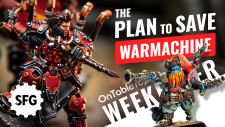
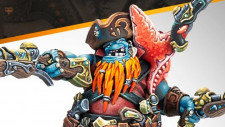
![Flames Of War – Villers-Bocage 80th Anniversary Battle [Catch Up Now]](https://images.beastsofwar.com/2024/06/Flames-Of-War-Villers-Bocage-80th-Anniversary-LIVE-BATTLE-225-127.jpg)

